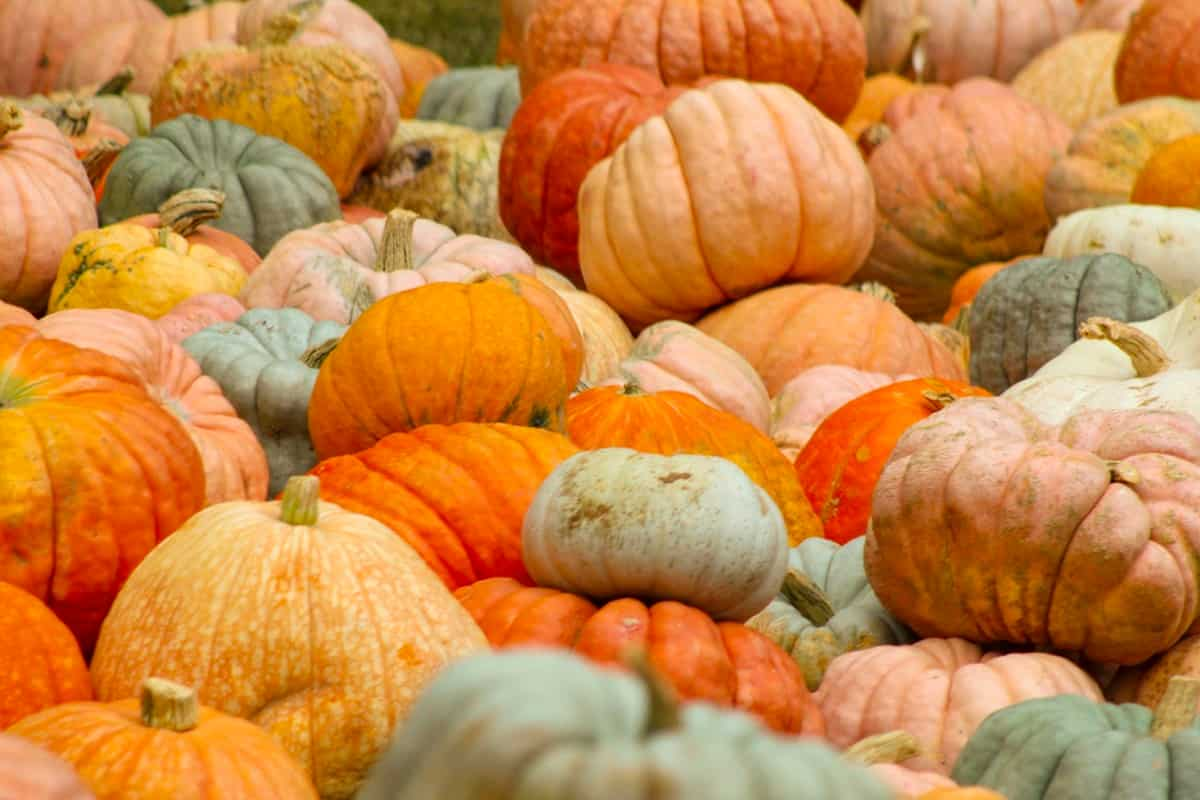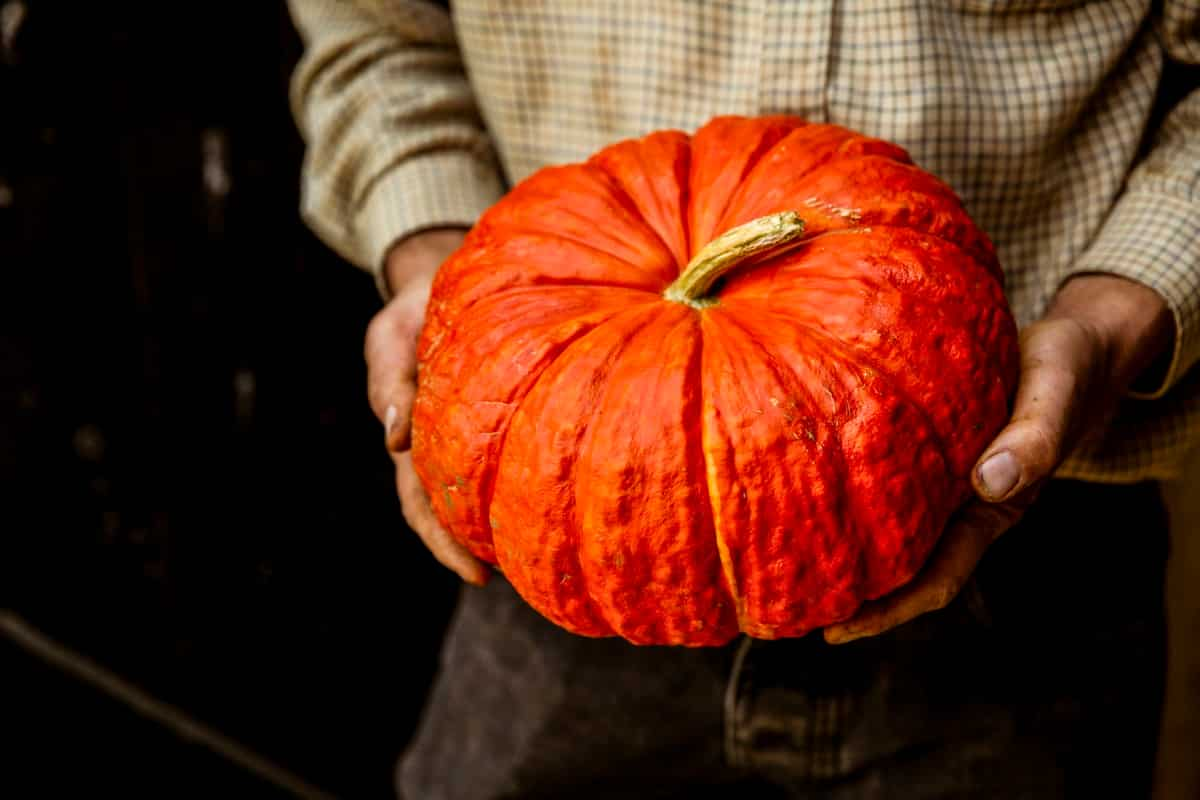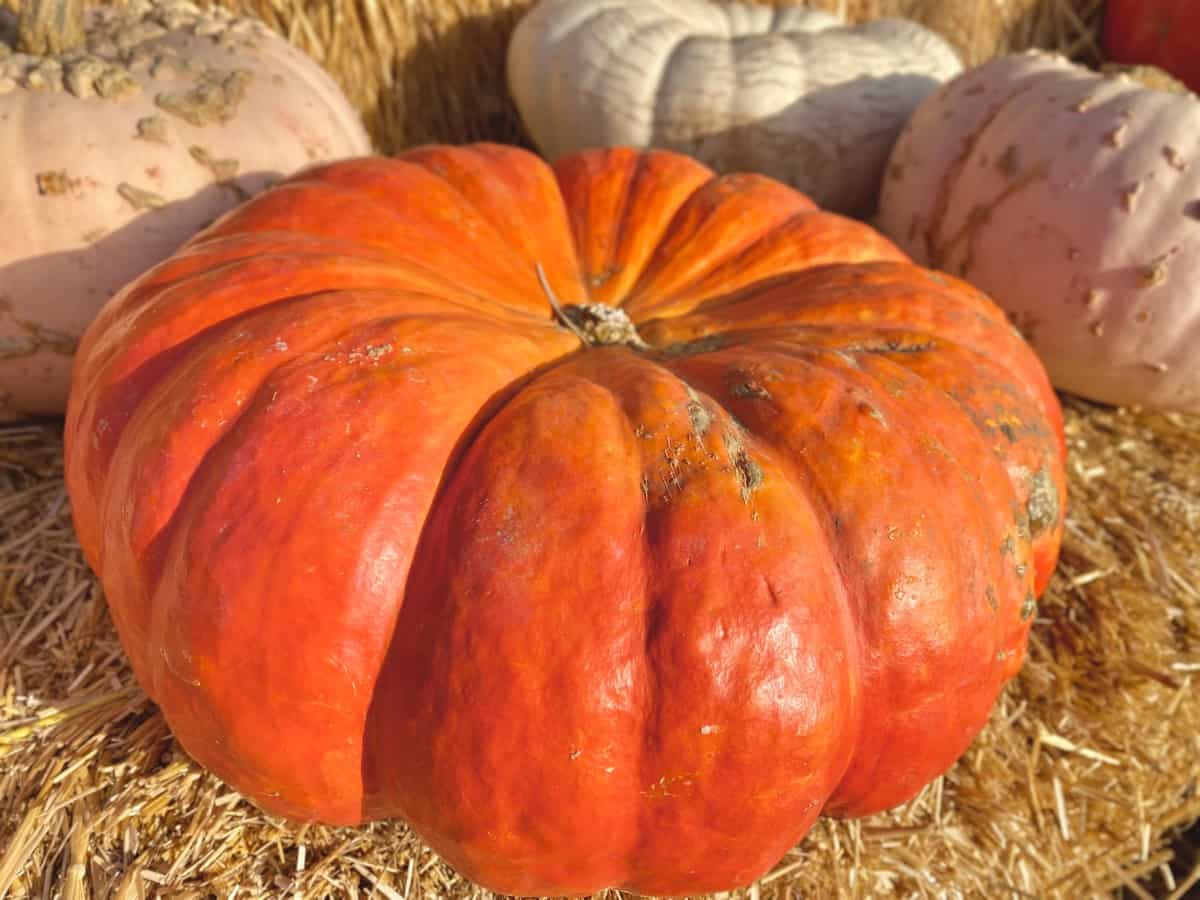The presence of Cinderella pumpkins often magnifies the beauty and charm of the pumpkin patch. These flat, reddish-orange pumpkins reminiscent of fairy tales are a favorite for fall decorations and pies. When it comes to Cinderella pumpkins, many questions arise, such as, “How do you grow Cinderella pumpkins?

How long does it take for Cinderella pumpkins to grow? What’s the spacing requirement for Cinderella pumpkin seeds?” From Cinderella pumpkin growing stages to their unique sizes, there’s much to know about these lovely pumpkins. Let’s dive in!
History of Cinderella Pumpkins
Stepping back in time, the origin of Cinderella pumpkins is as enchanting as its name. Inspired by the old French fairy tale, these pumpkins have always been symbolic of magic and transformation. Historically, they trace their roots back to the Rosalind variety from France. The traditional illustrations in the “Cinderella” story are believed to depict these pumpkins as the ones transformed into gorgeous carriages. Evoking the imagery of the vintage French countryside, Cinderella pumpkins have been cultivated for centuries for their aesthetic appeal and sweet, rich flesh.
Varieties of Cinderella Pumpkins
Over the years, Cinderella pumpkins’ cultivation and popularity have led to various varieties’ emergence. While the classic is a favorite, several offshoots are now available to cater to diverse tastes and preferences. Some varieties boast a deeper hue, while others may have a flattened shape. Each type retains the signature look but may differ in taste, color, and texture. While the classic remains the most sought-after, experimenting with other varieties can bring a delightful surprise to your fall festivities.
How to Plant and Grow Cinderella Pumpkins
One of the most common queries surrounding these pumpkins is, “How do you grow Cinderella pumpkins?” The process is quite straightforward. Begin with selecting a sunny spot in your garden. Prepare the soil by making it rich in organic matter. Once you have your Cinderella pumpkin seeds, plant them after the last frost has passed. Cinderella pumpkin spacing is crucial; ensure you give them enough room to grow, usually spacing the seeds 3 to 5 feet apart.
Water the seeds thoroughly, and you’ll witness the Cinderella pumpkin growing stages in due course. As the vines grow, they’ll start bearing beautiful flat, ribbed pumpkins. Another frequently asked question is, “How long does it take for Cinderella pumpkins to grow?” Typically, it takes about 90 to 100 days for Cinderella pumpkins to mature fully from planting to harvesting.
In case you missed it: How to Grow Atlantic Giant Pumpkin from Seeds: Planting, Size, and Weight

Care of Cinderella Pumpkins
Nurturing your Cinderella pumpkins is as much a labor of love as it is of technique. Regular watering is crucial, especially during the initial stages. However, ensure you’re not over-watering as pumpkins thrive in well-drained soil. Mulching can be beneficial to retain soil moisture and keep the pumpkins clean. As the pumpkins grow, monitor them for pests and diseases.
Regular inspections will help you tackle potential threats in the early stages, ensuring your pumpkins remain healthy and vibrant. It’s also essential to keep the growing area free from weeds, which can compete for nutrients. Proper care guarantees a bountiful harvest, with pumpkins perfect for pies or porch decorations.
Cinderella Pumpkin Size
When we talk about Cinderella pumpkins, their distinct shape and size often come to the forefront of the discussion. “How big are Cinderella pumpkins?” is a common question. Typically, Cinderella pumpkins are broad and flat, often measuring between 15 to 20 inches in diameter.
They generally weigh between 20 to 35 pounds, although some can grow even larger with the right conditions. Their size makes them perfect for decorative purposes, especially for those who want a pumpkin that stands out from the usual round varieties. The flat shape also makes them a favorite for culinary purposes, making the pumpkin’s flesh easily accessible.
Watering Cinderella Pumpkins
The key to thriving Cinderella pumpkins lies significantly in the watering techniques employed. Like most varieties, Cinderella pumpkins require consistent moisture, especially during their initial growth stages. It’s important to keep the soil damp but not too wet. Too much water can harm the roots, and too little can make the plant weak. It’s better to water pumpkins deeply but not too often.
Drip irrigation or a soaker hose is best because they water the roots directly and avoid wet leaves, which can cause fungus. As the fruit begins to mature, reducing the watering frequency is advisable, allowing the soil to dry out a bit between waterings. This ensures that the pumpkins aren’t waterlogged, which can diminish their flavor and storage capacity.
In case you missed it: 16 Best Pumpkin Patches in Illinois (IL): For Central, Southern, and Northern Regions

The Best Fertilizer for Cinderella Pumpkin Plants
The right nutrition is paramount for Cinderella pumpkins to achieve their iconic size and flavor. Fertilizing plays a significant role in this. Begin by enriching the soil with well-decomposed compost or manure before planting, ensuring a good start for the young plants. A balanced fertilizer, typically with an N-P-K ratio of 10-10-10, can be beneficial as they grow.
However, as the flowering stage commences, switching to a low-nitrogen, high-phosphorus, and potassium fertilizer is advisable to encourage fruit development over foliage. Always ensure you follow the manufacturer’s instructions when applying fertilizers. Regular soil tests can also guide you in understanding your soil’s nutrient needs, enabling you to adjust your fertilization strategy accordingly.
Uses of Cinderella Pumpkins
With their captivating appearance and rich flavor, Cinderella pumpkins are versatile in their utility. Their flat, broad shape and deep orange hue make them a favorite for fall decorations. They can be placed on porches, carved into intricate designs, or used in fall-themed centerpieces. Beyond their aesthetic appeal, Cinderella pumpkins are also cherished for their culinary value. The sweet, dense flesh is perfect for pies, soups, and roasts.
The pumpkin puree can be used in various recipes, from bread muffins to smoothies. When you roast the seeds, they become a tasty and healthy snack full of protein, fiber, and important minerals. Every part of the Cinderella pumpkin can be utilized, making it a treasured choice for both gardeners and chefs alike.
In case you missed it: How to Grow Jarrahdale Pumpkins from Seeds: Planting, and Care

Conclusion
With its enchanting history, various varieties, and unique shape, Cinderella pumpkins are a beautiful addition to any garden. Whether you’re growing them for their decorative appeal or their sweet, flavorful flesh, understanding their history, the right planting techniques, and proper care can ensure a magical harvest season.
- Feed Your Flock for Less: Top 10 Tips to Save on Chicken Feed
- Ultimate Guide to Ossabaw Island Hog: Breeding, Raising, Diet, and Care
- Hatching Answers: The Top 10 Reasons Your Chickens Aren’t Laying Eggs
- Eggs and Economics: Breaking Down the Cost of Raising Backyard Chickens
- Defend Your Greens: Proven Methods to Keep Iguanas Out of Your Garden
- Ultimate Guide to Cinnamon Queen Chicken: A Comprehensive Guide for Beginners
- Ultimate Guide to California Tan Chicken: Breeding, Raising, Diet, Egg-Production and Care
- Ultimate Guide to Marsh Daisy Chicken: Breeding, Raising, Diet, and Care
- 10 Types of Chicken Farming Businesses You Can Start for Profits